It’s a Volvo Jim, but not as we know it. The swooping lines, dramatic curves and brooding stance of the S60 Concept bring a new visual language to the Volvo brand. This is a beautiful design solution.
While the design may not be pure Volvo, the development of the car’s safety credentials are true to the brand’s core values. The car features a new Collision Warning system, which incorporates a Full Auto Brake and pedestrian detection system, designed to react when a pedestrian walks out in front of a car. The system will activate the car’s full braking power if the driver does not respond to the danger.
The new S60 is scheduled to go on sale in 2010 and Thomas Broberg, safety expert at Volvo Cars, has high expectations for the family sized saloon’s Collision Warning capabilities, “The previous stages were developed to help the driver avoid collisions with other vehicles. Now we are taking a giant step forward with a feature that also boosts safety for unprotected road-users,” explains Thomas Broberg, safety expert at Volvo Cars.
“What is more, we are now advancing from fifty percent to full automatic braking power. To our knowledge, none of our competitors have made such progress in this area. This technology helps us take an important step towards our long-term vision of designing cars that should not crash,” he added.
Briberg’s confidence in his product seems to know no bounds, leading to this extraordinary claim, “Our aim for 2020 is that no one should be killed or injured in a Volvo car.”
Wow, that sounds like a claim only a desperate politician will make. Volvo Australia would neither confirm or deny plans to employ Bob Hawke in a PR role!
Other innovations found in the S60 Concept include a new fuel efficient 1.6 litre diesel GTDi engine and sliding rear doors. Although, in profile view the doors look similar to suicide doors found in the Rolls Royce Phantom, they pop out and slide backwards, parallel to the car’s body in a fashion one would expect on a people mover.
Also included in the concept model is a pretty wild Orrefors crystal centre stack, housing HVAC controls. Quite how that stands up to a crash test is anyone’s guess. I’m tipping that won’t make the production model.
The S60 Concept is due for a full public release at the Detroit Auto Show in mid January 2009. More pics and full press statements after the jump. If you’ve got the patience for creative PR blurb, read the last release below, it’s a pearler!
The Volvo S60 Concept: Groundbreaking Volvo Technology Helps Drivers Avoid Accidents with Pedestrians
Volvo Cars will introduce the next generation of preventative safety technology in the Volvo S60 Concept being unveiled at the North American International Auto Show (NAIAS) in Detroit next month.
Collision Warning with Full Auto Brake and pedestrian detection reacts when a pedestrian walks out in front of a car. The system will activate the car’s full braking power if the driver does not respond to the danger.
This groundbreaking innovation will be a key feature of the all-new Volvo S60 when it is launched in 2010, and is the next step in Volvo Cars’ continuous development of technologies that detect dangerous situations and that actively help the driver avoid an accident.
“The previous stages were developed to help the driver avoid collisions with other vehicles. Now we are taking a giant step forward with a feature that also boosts safety for unprotected road-users. What is more, we are now advancing from fifty percent to full automatic braking power. To our knowledge, none of our competitors have made such progress in this area,” explains Thomas Broberg, safety expert at Volvo Cars.
“This technology helps us take an important step towards our long-term vision of designing cars that should not crash. Our aim for 2020 is that no one should be killed or injured in a Volvo car,” he added.
Accidents involving pedestrians common in urban traffic
Within the EU, the proportion of pedestrians figuring in overall traffic fatalities varies in between 10 and 25 percent depending on country.
In the EU countries’ capital cities, 1,560 people died in road accidents in 2007. Of these, 43 percent were pedestrians.
The speed of the car involved in a collision with a pedestrian is of considerable significance to the outcome of the accident. Lowering the speed will help dramatically to reduce the risk of serious injury to the pedestrian. If speed drops from 50 km/h to 30 km/h, the chance of a pedestrian’s survival dramatically increases.
Avoids collisions at speeds below 20 km/h
“Our aim is that this new technology should help the driver avoid collisions with pedestrians at speeds below 20 km/h. If the car is being driven faster, the aim is to reduce the impact speed as much as possible. In most cases, we can reduce the collision force by about 75 percent,” says Thomas Broberg.
This technology is also highly beneficial in the event of rear-end impacts with other vehicles. Studies indicate that half of all drivers who drive into another vehicle from behind do not brake prior to the collision.
The main aim is still for the initial warning to be sufficient for the driver to brake or manoeuvre away from the hazard. Automatic braking is an emergency measure that is only activated when the collision is imminent.
In such cases, Collision Warning with Full Auto Brake can help entirely avoid a collision if the relative speed difference between the two vehicles is less than 25 km/h.
Safer detection with state-of-the-art technology
Collision Warning with Full Auto Brake and pedestrian detection consists of a new, state-of-the-art dual-mode radar unit integrated into the car’s grille, a camera behind the inside rear-view mirror and a central control unit.
The radar and camera continuously monitor the road in front of the car. The radar’s task is to detect objects and measure the distance to them. The camera’s function is to determine what type of objects are in the path of the vehicle.
The function is programmed to respond to cars in front that are at a standstill or moving in the same direction.
Thanks to the state-of-the-art radar, which has a widened field of vision, the unit can also detect the moving pattern of a pedestrian.
“We’ve been working on this technology for ten years now. We have had test cars out on the roads for several years and we’ve driven in many different countries Factors like traffic scenarious, road conditions and climate should be considered in the design of the final system. We can also use the information from these tests to make advance computer simulations, to test and verify the system in different scenarios” says Thomas Broberg.
New technology permits full braking power
In an emergency situation, the driver first gets an audible warning together with a flashing light in the windscreen’s head-up display. In order to prompt an immediate, intuitive reaction, the visual warning is designed to look like a brake light coming on in front. If the driver does not respond to the warning and the system assesses that a collision is imminent, the car’s brakes are applied with full braking power.
“Active brake activation requires that the object is confirmed by both the radar and the camera. Thanks to the state-of-the-art sensors, it is now possible to engage full braking power. We are among the very first in the industry to achieve this,” explains Thomas Broberg.
The system is built along the same principles as the human eye and, just like our own eyes, vision is impaired in the dark and in poor weather.
Upgraded Adaptive Cruise Control
Volvo Cars’ Adaptive Cruise Control (ACC) has now been upgraded with a queue assist function.
The radar-based Adaptive Cruise Control maintains the set time gap to the vehicle in front all the way down to standstill. Since the previous version was not active at speeds below 30 km/h, this means that this comfort-enhancing system becomes usable even in slow-moving queues with repeated starting and stopping.
It should be emphasised that the upgraded ACC has been developed to enable comfortable driving with an automatic gearbox in normal circumstances.
Collision Warning with Full Auto Brake and pedestrian detection and the upgraded Adaptive Cruise Control will be introduced in the all-new Volvo S60 in 2010.
The Volvo S60 Concept: GTDi Technology for Lower C02 Emissions
Volvo Cars has chosen a four-cylinder 1.6-litre petrol unit using highly-efficient Gasoline Turbocharged Direct Injection (GTDi) technology to feature in the Volvo S60 Concept. Volvo Cars’ first production vehicle with GTDi technology will be introduced in 2009.
Producing 134kW, the engine – in combination with a range of other technical measures – makes it possible to return an average fuel consumption rate of just 5.0l/100km and cut carbon dioxide emissions to 119 g/km.
In a conventional petrol engine, fuel is injected into the inlet manifold ahead of the inlet valves. With direct injection, however, the fuel is injected directly into the combustion chamber under high pressure.
This technology promotes better gas flow with optimised air/fuel mixture and greater resistance to uncontrolled combustion. The result is higher power and lower fuel consumption.
GTDi technology combined with turbocharging makes it possible to reduce engine displacement with maintained performance, but with about 20 per cent lower fuel consumption and CO2 emissions.
“GTDi technology is an important CO2-cutting technology for petrol engines. In the S60 Concept we have also added a number of other developments that further reduce fuel consumption. Several of these features will make their way into our production models in the coming years,” says Derek Crabb, Vice President Powertrain at Volvo Cars.
Electric power steering, stratified combustion and other measures
In addition to GTDi technology, the Volvo S60 Concept integrates the following technical features to bring CO2 emissions down to 119 g/km:
- Stratified combustion. The combustion chamber is designed such that a an optimal blend of air and fuel is formed around the spark plug, surrounded in turn by pure air. This allows the engine to operate with a surplus of air, thus cutting fuel consumption.
- Start/stop functionality that switches off the engine when the car is at a standstill.
- Powershift geabox featuring two manual gearboxes working in parallel, each regulated by its own clutch.
- Electric Power Assisted Steering (EPAS), which in principle is an “electric servo” where the conventional hydraulic pump has been replaced by an electric motor.
- “DRIVe-Mode”. Gives the driver the possibility of reducing fuel consumption via an “economy mode” that limits the function of a number of selected electrical or mechanical systems.
- Grille shutter. A wind-deflecting panel that can be closed to reduce air drag when there is less need for cooling air.
- Flat underbody panels.
- The use of lightweight materials in the car body.
The driver chooses
“Several of these solutions can deliver significant CO2 reductions in the future since they can be used throughout large sections of the model range. When it comes to “DRIVe-Mode”, for instance, the driver can actively cut fuel consumption by reducing the function of certain comfort systems. The idea is that every owner can individually choose which systems he or she wants to limit,” says Magnus Jonsson, Senior Vice President, Research & Development at Volvo Cars.
The Volvo S60 Concept: An Insight into the Future of Volvo
The Volvo S60 Concept that will be unveiled at next month’s North American International Auto Show (NAIAS) providing a unique insight into the all-new Volvo S60 due in 2010.
“The all-new S60 will be one of the strongest players in a segment where the competition is razor-sharp,” says Volvo Cars President and CEO Stephen Odell.
The coupe-inspired lines that gave the original S60 its characteristic stance are even more pronounced in the next generation.
“The sporty design gives visual promise of an enthusiastic drive and I can assure you here and now that the all-new S60 will live up to that promise. The driving properties are better than in any previous Volvo. The car’s technology will help you to be a better and safer driver,” says Stephen Odell.
Volvo S60 Concept Exterior – DNA at a new level
The Volvo Cars design team has clearly upped the ante in the evolution of Volvo’s design DNA.
“The concept car’s exterior gives a clear indication of what customers can expect of the all-new S60. On the inside we’ve been even more daring – there the focus has been on creating a vision of the future in the slightly longer perspective,” says Volvo Cars’ design director Steve Mattin.
Scandinavian inspiration
The front of the S60 Concept naturally sports the enlarged iron mark in the trapezoidal grille. The grille itself has a somewhat new appearance with structured horizontal vanes adding refinement to its form.
Two DNA lamps flank the grill, emphasising the vertical stance of the front and promoting the bonnet’s V-shape. The DNA lamps also become the starting points of the fresh sculptural design language of the bumpers. The angled headlamps flow up into the strongly sculptured bonnet. Combined with the lower air intake’s reverse trapezoidal shape, this gives the concept car a very expressive “face”.
“Dynamic and with considerable character, but without appearing aggressive. This car is packed with inspiration from Scandinavian design and from the Swedish coastline’s cliffs and seas. A thrilling blend of drama and sensuality,” says Steve Mattin.
Viking longboats in the headlamps
The concept car’s headlamps unite classic Scandinavian influences with modern high-tech.
In each of the headlamps, the lights form a sculpture creating the image of two miniature Viking longboats sailing side by side, one for main beam and one for dipped beam. When driving in the dark, the light is reflected from the concealed, upward-facing High Performance LED bulbs, projected ahead by the ships’ filled sails.
A closer look reveals a number of specially designed details. The compact cooling system for the LED bulbs has protruding cooling blocks made out of aluminium, semi-visible under the ships’ hulls. The design creates the illusion of shimmering glass panels that float above a dark and mysterious Scandinavian sea.
The semi-transparent housing incorporates a layered ring-like formation that is part of the position lights. You can see the confident face of the concept car illuminating in a ring-like formation.
Double wave and sensational doors
Viewed from the side, the concept car’s slim coupe roofline and window graphics are accompanied by an entirely new lateral shoulder line, forming a gentle double wave. Stretching from the headlamps all the way to the tail, it adds emotional excitement and plays with the surface and its highlights.
The unique rear doors offer a spectacular show whenever they are opened and shut. Door movement starts off in the traditional way via the push of a button. In the next phase, the forward section swings out away from the car’s body and the door glides parallel with the side of the car until it reaches its end position by the rear wheel.
Since the car does not have a B-pillar between the front and rear seats, this door configuration offers exceptionally generous entry and exit access.
Both the seven-spoke 20-inch wheels and the tread of the low-profile tyres have been specially designed to accentuate the concept car’s muscular, sporty looks. The bronze-painted brake callipers match the car’s ‘Warm Liquid Copper’ paintwork, which draws its inspiration from Sweden’s rich copper mining history.
Inspiration from the racing track
“In forthcoming models, you will see more and more of our “racetrack” design cues. The car’s lines do not end abruptly but instead forge a continuous flowing pattern inspired by the fast sweeps of the racing track. In the concept car, this is particularly visible at the rear,” says Steve Mattin.
The tail lamps, which follow the curve of the rear shoulders, are as advanced as the headlamps up front. When switched off, the lamp panels show no trace of the traditional red or yellow associated with rear lights. But when activated, the position marker lights, brake lights and turn indicators come on in their correct colours with the help of LED bulbs.
The lighting system’s solid glass panel is sectioned into horizontal “slices” that create the visual impression of a three-dimensional architect drawing when the lights come on.
At the rear there is also a retractable diffuser that adjusts with vehicle speed to give better aerodynamic properties.
The S60 Concept Interior – a visionary celebration of Scandinavian design
With the interior of the Volvo S60 Concept, Volvo Cars’ design director Steve Mattin and his team are displaying a variety of spectacular ideas for future models.
“You could say that we are showing the road we would like to take in the future. This interior is without doubt the most exclusive we have ever created,” says Steve Mattin.
The interior expresses a typically Scandinavian feel: fresh, light and airy. In the middle of the four-seater car glitters the jewel in the crown – a floating centre stack crafted from handmade, solid Orrefors crystal. It floats like a gentle, calm wave from the instrument panel all the way to the rear seat backrest.
“It resembles a waterfall that flows down from the instrument panel and then courses along the middle of the car’s interior,” says Steve Mattin.
The crystal panel appears to float above the centre stack and is partially framed by polished aluminium trim. With the help of invisible light sources, the crystal’s shimmering glow can be tailored to match the driver’s mood.
“If you want to explore the full scope of Scandinavian design, Sweden’s glassworks are a natural source of inspiration. What is more, large glass panels are a central part of the very openness that characterises modern Swedish architecture,” explains Steve Mattin.
Creativity and functionality
Although the material in the centre stack radiates uninhibited artistic freedom, the interior’s functionality remains.
- The gear selector has an entirely new, flexible design. In the horizontal standby position the car changes gear automatically. If the driver is in the mood for changing gear manually, the lever can be flipped up into the vertical position. Beside the gear selector there is also an integrated starter button and parking brake.
- The centre console runs all the way to the rear seat backrest, and under the crystal panel between the individual seats there are two drinks holders that elegantly slide out when required.
- Beside the driver’s seat, the crystal console cuts straight through the instrument panel and its upper section forms a navigation screen at the precise height of the driver’s combined instrument panel.
- At the bottom, the four iconic rotating controls protrude from elegant matt-polished recesses in the glass panel. In the middle there is a removable remote control.
“We’ve put the focus on ergonomics and safety. With the combined instrument at the same height as the navigation screen, all it takes is a horizontal eye movement to switch between the sources of information. Another example is that the controls used when you start and stop driving are a few centimetres from each other near the gear selector,” explains Steve Mattin.
Driver-oriented environment
The entire driving environment has been designed to provide convenient control. The driver is backed up by functional instruments, easily accessible controls and sophisticated technology that monitors the surrounding traffic, ready to alert the driver in the event of danger.
The combined instrument is similar in design to the unit in the Volvo XC60 Concept. It resembles a bumble-bee with a round speedometer as the “body” flanked by two digital “wings” providing all the other information.
“The speedometer is designed as a three-dimensional glass spiral. The low numbers appear closest to the eye and the figures appear to be increasingly distant as you accelerate. The idea is that the speedometer should provide a visual reminder of the force of the forward motion,” explains Steve Mattin.
The combined instrument too has the centre stack’s floating, almost weightless feel about it. The instrument is built up in several layers. In the gaps between the layers concealed vents contribute to better airflow inside the cabin.
Safety information in the head-up display
Above the combined instrument, the driver receives information and alerts from the preventive safety systems via the windscreen’s head-up display. Information from the car’s Blind Spot Information System (BLIS) is integrated in the A-pillars.
The three-spoke steering wheel has integrated multifunctional rotating controls. The open lightweight aluminium pedals echo the design language of the concept car’s wheels.
Slim, floating leather seats
The floating theme continues in the concept car’s slim, lightweight contoured seats, made of soft Light Blond leather with contrasting stitching. The seats are attached to the centre console’s lower section and inner sill, which means that they don’t actually touch the floor.
Both the seat belt and the armrest are integrated into the seat itself. The backrest’s pony-tail slot, first featured in previous concept cars, has a new, slightly asymmetrical design.
“The aim is to create a pleasant living-room atmosphere with gentle, invisible transfers between the various surfaces. For instance, the dark, ecologically tanned saddle leather on the floor continues up on the lower part of the door,” relates Steve Mattin.
The upper part of the doors is faced with genuine blond birch wood of the same colour as the Scandinavian coastline’s salt- and sun-bleached wooden piers and driftwood. Two parallel slits create a wave-shaped protrusion whose upper section forms a comfortable leather armrest.
The Volvo S60 Concept – One song with customer demands
The Volvo S60 Concept was created to pave the way for Volvo Cars in one of the automotive world’s most focused and competitive segments.
“Customers in this segment know exactly what they want. The emphasis is on emotional appeal, sporty design and dynamic driving properties. Success in the segment will do a lot for the brand’s image and we are convinced that the all-new Volvo S60 is going to be a particularly strong contender,” says Stephen Odell.
The first-generation Volvo S60 was launched in 2000 and was profiled as a coupe with four doors. The car’s sporty nature has made the S60 one of Volvo Cars’ most global models.
“Irrespective of whether the customers are in the USA, Europe or Russia, they all prioritise the same things. Now we are giving them an entirely new S60 packed with both emotional and rational appeal. A car designed to make a unique impact even among the most discerning buyers,” says Stephen Odell.
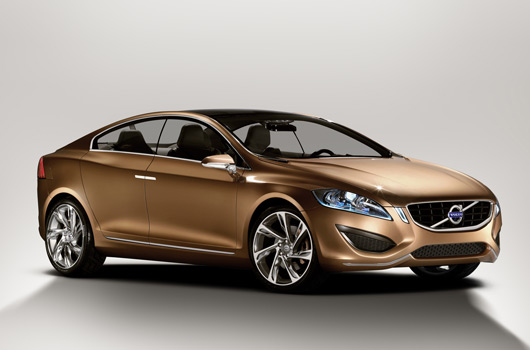
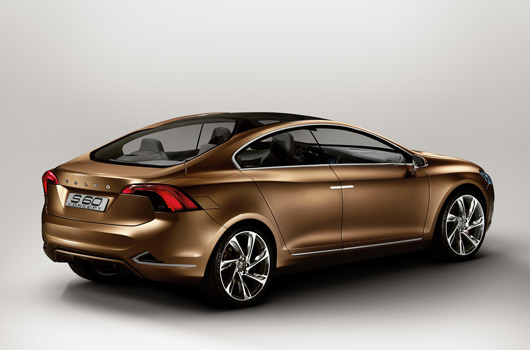
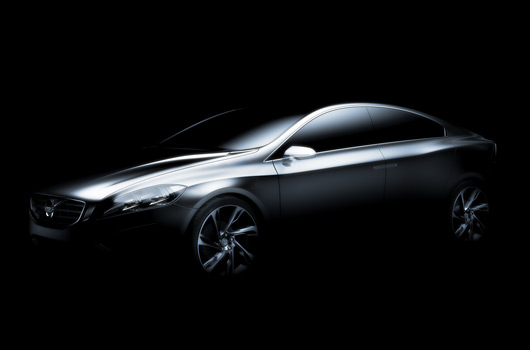
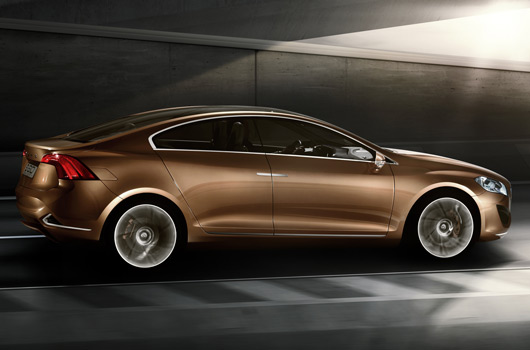
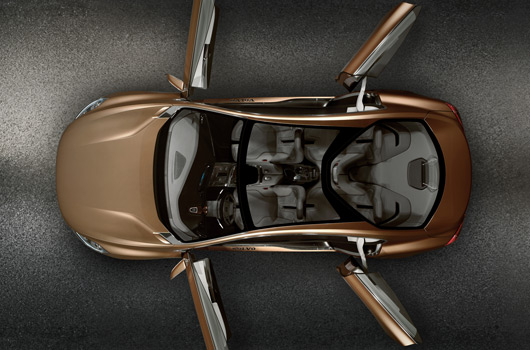
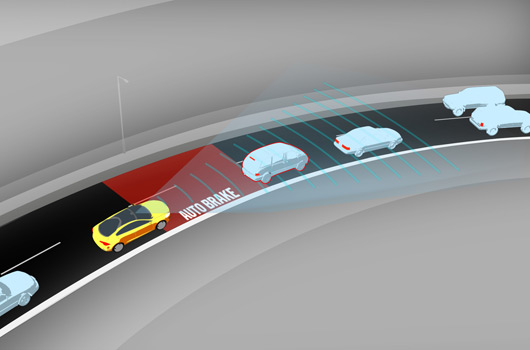
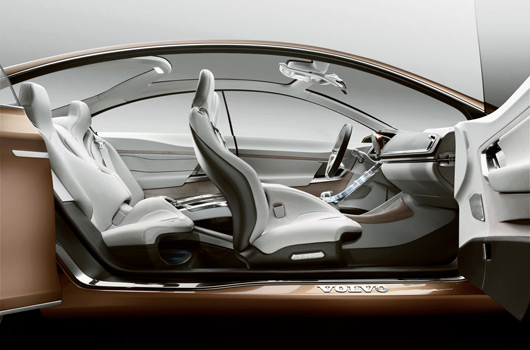
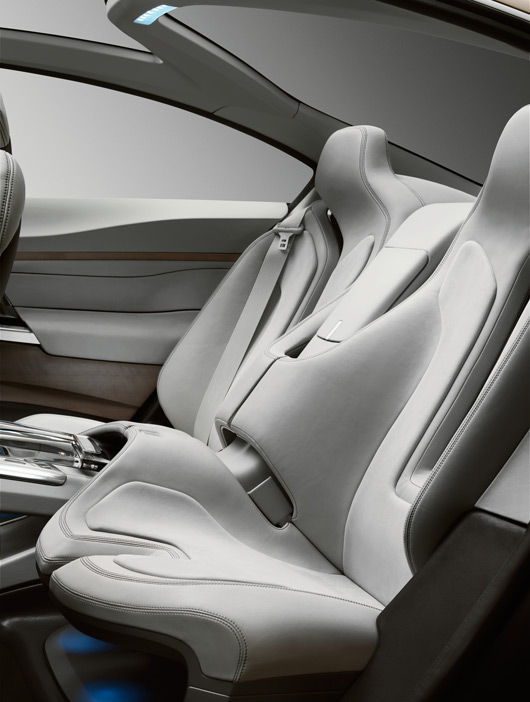
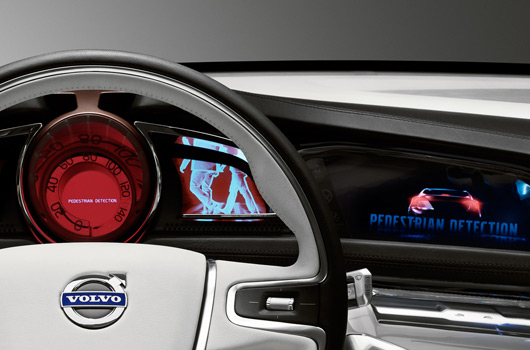
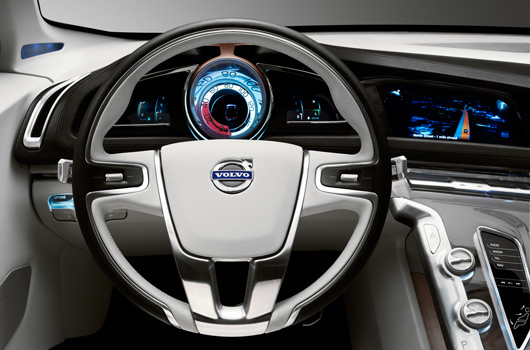
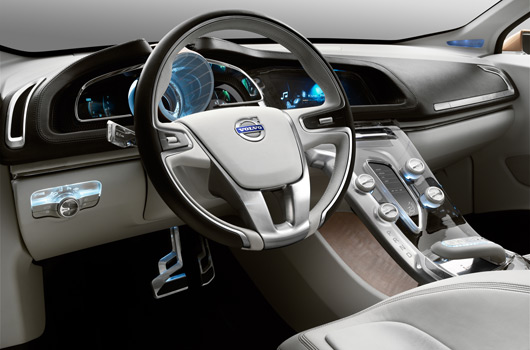
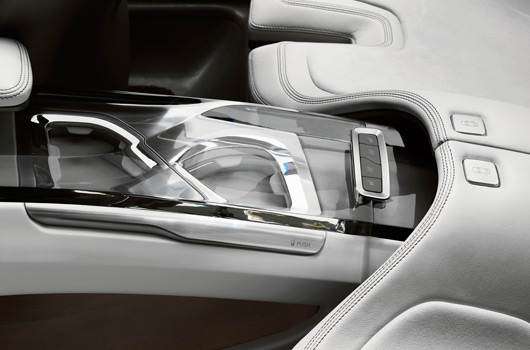
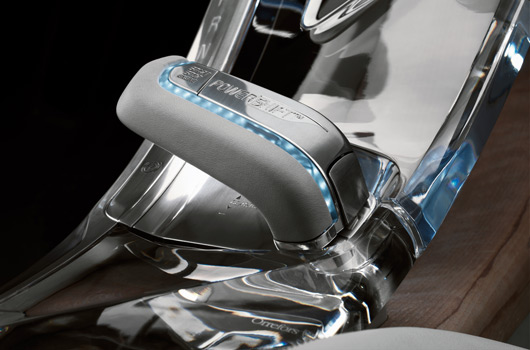
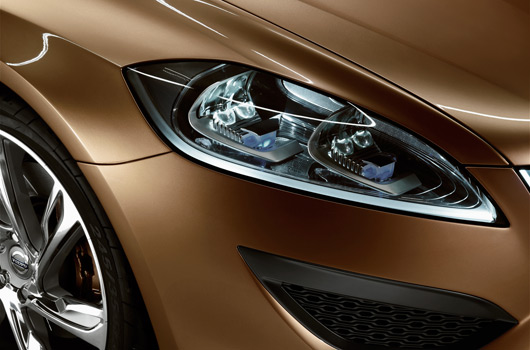
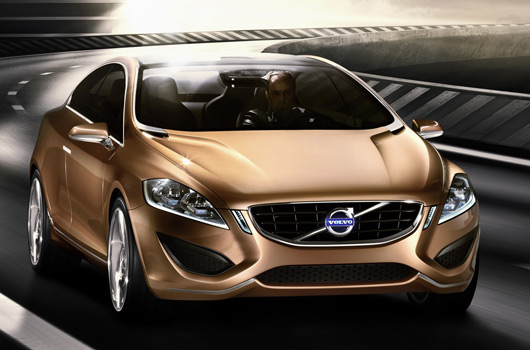
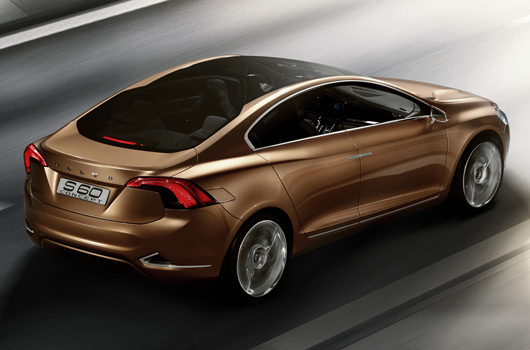
One reply on “Volvo S60 Concept”
[…] is the norm, styling cues from the S60 concept are clear to see, but things are a bit more reserved in sheet metal form. With just a side profile […]